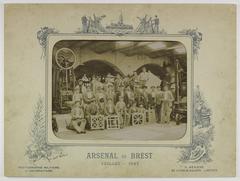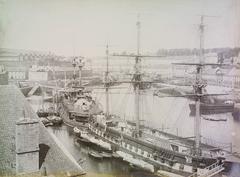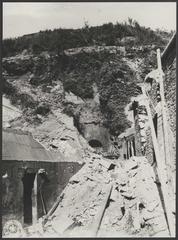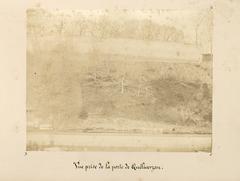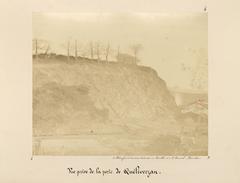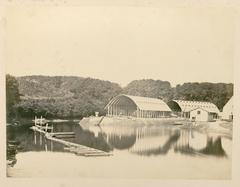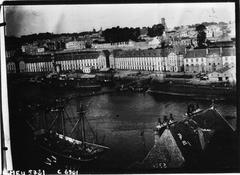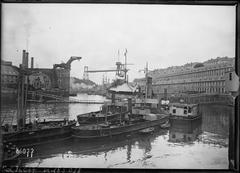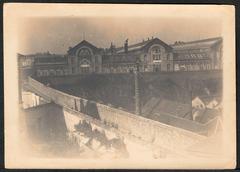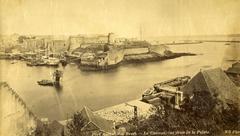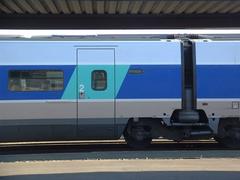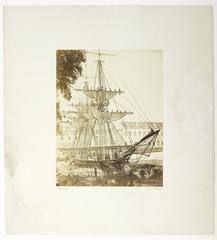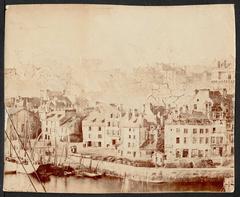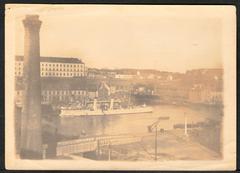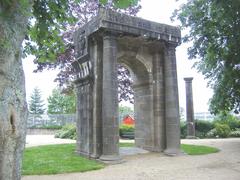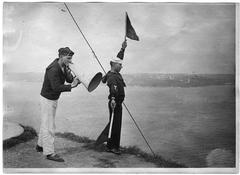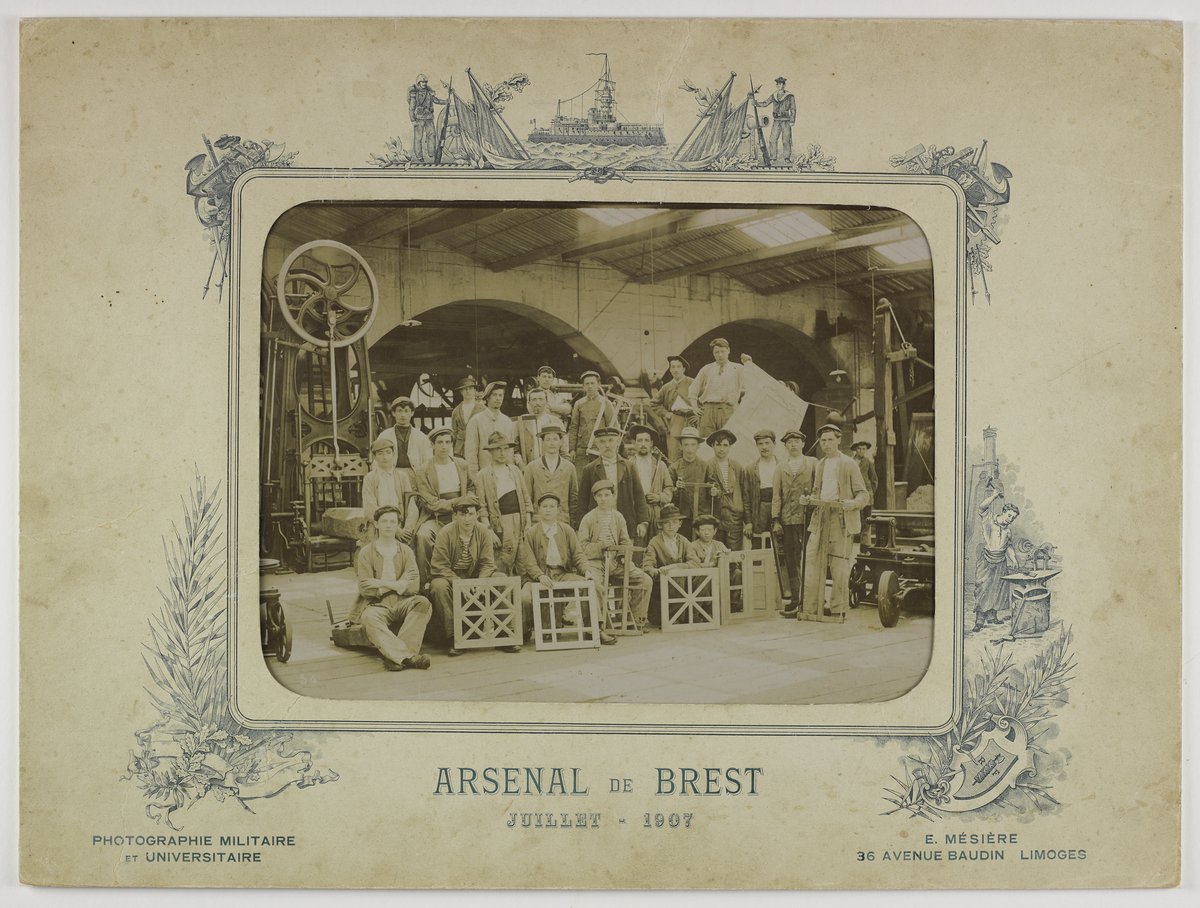
Brest Arsenal Visiting Hours, Tickets, and Historical Sites Guide
Date: 14/06/2025
Introduction: Brest Arsenal’s Legacy and Modern Role
Nestled along the Penfeld River in the dynamic city of Brest, France, the Brest Arsenal (Arsenal de Brest) is a cornerstone of French naval history. Founded in the early 17th century under Cardinal Richelieu, the Arsenal has been instrumental in shaping France’s maritime ambitions—from pioneering shipbuilding and fortification in the ages of Louis XIV and Vauban to serving as a critical hub during global conflicts and into the nuclear era. Today, as the principal maintenance and refueling base for France’s nuclear submarine fleet, it seamlessly combines historical significance with cutting-edge naval operations, employing nearly 15,000 personnel (fr.wikipedia.org; Sixense Group).
While public access is restricted due to its ongoing military function, special guided tours allow select glimpses into its storied past—showcasing historic dry docks, formidable WWII-era submarine pens, and ongoing shipbuilding activities (petitfute.com). Nearby, the Château de Brest, home to the National Maritime Museum, provides a rich context for Brest’s centuries-old maritime culture (Musee Marine). This comprehensive guide delivers essential details on visiting hours, tickets, tour arrangements, and practical travel tips—alongside in-depth historical and architectural insights to ensure a rewarding visit.
Table of Contents
- Overview & Heritage
- Historical Development (17th–19th Centuries)
- The Arsenal in Times of War
- Modernization and Strategic Importance
- Facilities, Security, and Daily Operations
- Environmental and Technological Initiatives
- Visitor Information: Hours, Tickets, Tours
- Brest’s Other Must-See Attractions
- Château de Brest: Hours, Tickets, Visitor Guide
- FAQs
- Media & Internal Links
- Summary & Resources
1. Historical Development: From Richelieu to the Golden Age
Early Origins (17th–18th Centuries)
The Brest Arsenal’s roots date to 1631–1635, when Cardinal Richelieu established the first shipyards and fortifications, capitalizing on the site’s strategic Atlantic position (fr.wikipedia.org). Under Louis XIV and the engineering genius Vauban, defenses were expanded to include fortified walls and the Château de Brest, while new basins, workshops, and warehouses supported France’s growing naval ambitions (pop.culture.gouv.fr).
Expansion and Naval Innovation (18th–19th Centuries)
The Arsenal flourished under Louis XV and Louis XVI, becoming a hub for shipbuilding advances and enabling the construction of larger warships. The complex’s walled perimeter and controlled access points, such as the Porte de l’Arrière-Garde, reflected its military and technological significance (pop.culture.gouv.fr).
2. The Arsenal in Times of War
Napoleonic Wars & 19th Century
The Arsenal was critical during the Napoleonic Wars, producing and maintaining vessels that saw action in major naval battles.
World War I
During WWI, Brest Arsenal became a vital supply base for U.S. forces, providing repairs and logistical support to Allied fleets (ww2db.com).
World War II
Occupied by Germany in 1940, the Arsenal was transformed into a major U-boat base, with massive concrete pens built for submarine protection. Allied bombing resulted in heavy destruction, but the 1944 Battle for Brest underscored the Arsenal’s strategic value (ww2db.com).
3. Modernization and Strategic Importance
Postwar Reconstruction
After WWII, the Arsenal was rebuilt, including the construction of Laninon dry docks (1945–1953). Adaptations for NATO operations followed, including berths for allied aircraft carriers (fr.wikipedia.org). Modern vessels like the Charles de Gaulle aircraft carrier are now serviced here (ww2db.com).
National Security Role
Today, the Arsenal is France’s second-largest naval base, supporting both conventional and nuclear fleets. Its proximity to the Île Longue submarine base makes it essential to France’s nuclear deterrence strategy, with special facilities for refueling and maintaining SSBNs (The Bulletin).
4. Facilities, Security, and Daily Operations
Infrastructure
- Drydocks: Three major drydocks handle maintenance and refits for submarines and surface ships.
- Shipyards: Support construction and dismantling of naval vessels.
- Security: Strict access through gates like Porte Caffarelli; high-security measures for all entrants (Visite.fr; Brest.fr).
Operations
- Shipbuilding & Maintenance: Continuous modernization and integration of new technologies.
- Nuclear Submarine Support: Long-term repairs, refueling, and logistics for France’s strategic deterrent (The Bulletin).
- Workforce: Nearly 15,000 personnel, including military, engineers, and civilian staff—making the Arsenal a city within the city (Sixense Group).
5. Environmental and Technological Initiatives
- Infrastructure Modernization: New electrical plants, pumping stations, and covered bunkers enhance operational safety and efficiency (The Bulletin).
- Environmental Monitoring: Satellite-based InSAR monitoring by Sixense and IGN detects structural shifts, helping protect the Penfeld River ecosystem (Sixense Group).
6. Visitor Information: Hours, Tickets, and Tours
Access and Security
- General Access: The Arsenal is closed to the public except for special guided tours, typically offered during French school holidays (Easter, All Saints’, and summer) (petitfute.com).
- Visiting Hours:
- Easter & All Saints’ holidays: 13:30–15:30
- Summer holidays: 10:00–16:00
- Ticketing: Tours are free but require advance booking, usually through the Brest Tourist Office or Préfecture Maritime.
- Entry Requirements: Valid passport or EU national ID required. Photography is prohibited.
Booking & Contact
- Arrange Tours: Contact +33 2 98 22 06 12 or [email protected] (Visite.fr).
- Languages: Tours are mainly in French; inquire about English options when booking.
Visitor Tips
- Arrive early for security checks; bring only essentials.
- Wear comfortable, weather-appropriate clothing (wildtrips.net).
- Some areas are not accessible for visitors with reduced mobility; contact in advance for details.
7. Brest’s Other Must-See Attractions
Château de Brest & National Maritime Museum
- Address: Rue du Château, 29200 Brest
- Visiting Hours:
- April–September: 10:00–18:30
- October–March: 13:30–18:30 (closed January 1, May 1, and December 25)
- Tickets: €5.50 (full), €4.00 (reduced), free for under 26, military, unemployed, and disabled (Chemins de Mémoire)
- Highlights: Roman ramparts, Vauban’s bastions, the Keep, historic towers, and the National Maritime Museum’s renowned collections (Musee Marine).
- Activities: Guided tours (French/English), family-friendly themed tours, panoramic harbor views, and special exhibitions.
Other Nearby Sights
- Tour Tanguy: Medieval tower with harbor views.
- Océanopolis: Major marine science center and aquarium.
- Les Ateliers des Capucins: Former naval workshops, now a vibrant cultural district.
- Abri Sadi Carnot: WWII air raid shelter.
8. Frequently Asked Questions (FAQs)
Q: Can I visit Brest Arsenal without a tour?
A: No, access is only possible during guided tours at specific times.
Q: Is photography allowed?
A: No, photography is strictly prohibited inside the Arsenal.
Q: Are tours available in English?
A: Most are in French; inquire when booking for English options.
Q: Is Brest Arsenal accessible for people with reduced mobility?
A: Some areas may be challenging; contact visitor services in advance.
Q: Where can I buy Château de Brest tickets?
A: On site or online via the National Maritime Museum website.
9. Visuals, Multimedia, and Internal Links
- Explore virtual tours, maps, and high-quality images via the Brest Tourist Office and the National Maritime Museum website.
10. Summary and Planning Your Visit
The Brest Arsenal is a living testament to France’s maritime ingenuity and resilience—its restricted access only adding to the allure for history enthusiasts and curious travelers. Plan ahead, confirm visiting dates, and prepare for security protocols to enjoy a rare glimpse into this extraordinary site. Enhance your journey with a visit to the Château de Brest and the National Maritime Museum, and take time to explore the wider city’s cultural tapestry (petitfute.com; Brest Tourist Office).
Stay informed about tour opportunities and events through the Brest Tourist Office and consider downloading the Audiala app for up-to-date guides and interactive maps.
11. Sources and Official Links
- Arsenal de Brest – Wikipedia
- Brest Arsenal Project – Sixense Group
- French Nuclear Weapons 2023 – The Bulletin
- Brest Naval Base – Visite.fr
- Exploring the Brest Arsenal – Simply France
- Arsenal et Port Militaire – Petit Futé
- Château de Brest and National Maritime Museum – Musée National de la Marine
